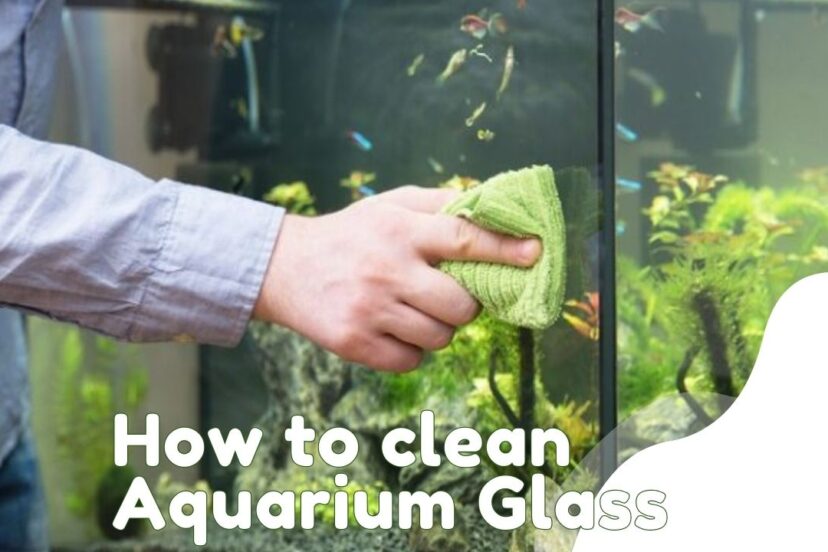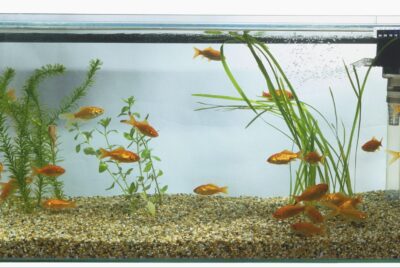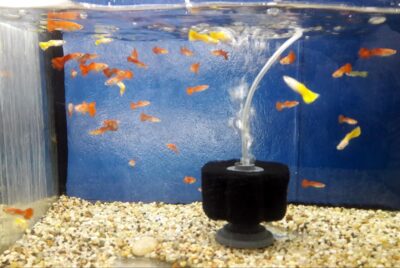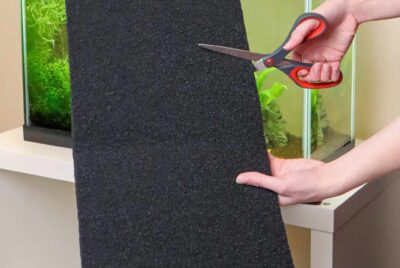How to Clean Aquarium Glass
Keeping your aquarium glass clean is essential for maintaining the beauty of your tank and ensuring that your fish are visible and vibrant. However, cleaning aquarium glass can be a delicate process, as you need to use fish-safe methods and products. In this comprehensive guide, we will explore various techniques and tools you can use to effectively clean both the inside and outside of your aquarium glass. Whether you are dealing with algae, biofilm, or lime buildup, we have got you covered. Let’s dive in!
Understanding the Importance of Clean Aquarium Glass
The cleanliness of your aquarium glass plays a crucial role in appreciating the beauty of your tank. Streaks, algae, and biofilm on the glass can diminish the vibrancy of your fish and make your tank look dull. By keeping your glass crystal clear, you can enhance the overall visual appeal of your aquarium. However, it is vital to use fish-safe cleaning methods and avoid toxic household cleaners that can harm your fish.
Cleaning the Inside Glass
Cleaning the inside of your aquarium glass is essential to remove algae and biofilm buildup. These substances can accumulate over time, affecting the clarity of the glass and obstructing your view of the fish. It is recommended to clean the inside glass right before your weekly water changes to ensure that any scraped-off algae gets removed during the water change.
Removing Algae and Biofilm
Even with proper maintenance, algae and biofilm can still build up on the inside glass of your aquarium. To effectively remove them, it is best to scrape them off while the tank is still full of water. This allows for easier visibility of the algae on the glass and facilitates the scraping process.
Choosing the Right Tools for the Job
When it comes to scraping algae off the glass, there are several tools available. Two popular options are the FZONE Scraper Cleaner and the FL!PPER Cleaner Float.
The FZONE Scraper Cleaner
The FZONE Scraper Cleaner is a simple yet effective tool for removing algae from the glass. It features a thin razor blade and an adjustable head that allows you to set the scraping angle. This scraper is particularly useful for tough green spot algae and can quickly restore the clarity of your glass.
The FL!PPER Cleaner Float
The FL!PPER Cleaner Float is a magnetic glass cleaner that combines scrubbing and scraping capabilities. It has a scrubby side for general cleaning and a scraper side for more stubborn algae. With its ability to reach tight corners and scrape along the substrate, the FL!PPER Cleaner Float is a versatile tool for maintaining a clean aquarium glass.
Cleaning the Outside Glass – (How to Clean Aquarium Glass)
Cleaning the outside of your aquarium glass is a relatively simple process. It is best to perform this task as the final step of your water changes to avoid dripping water onto the clean glass. Vinegar is an excellent and fish-safe option for cleaning the outside glass due to its natural disinfectant properties.
Using Vinegar for Safe and Effective Cleaning
To clean the outside glass, prepare a 50/50 solution of water and white vinegar in a clean spray bottle. Lightly spray the solution onto the glass and wipe it down with lint-free paper towels. Vinegar’s acidity helps dissolve stubborn lime deposits and leaves your glass streak-free.
The HIWARE Squeegee: A Handy Tool for Streak-Free Glass
While not essential, using a squeegee can make the cleaning process easier and more efficient. The HIWARE All-Purpose Shower Squeegee, with its stainless steel construction and 10-inch size, is an excellent choice for aquarium glass cleaning. It ensures a streak-free finish and helps remove any excess water or vinegar solution.
Tackling White Residue on Aquarium Glass – (How to Clean Aquarium Glass)
If you notice a white residue forming on the top of your aquarium glass, it is likely due to the evaporation of hard water. This residue, known as limescale, is a result of the minerals in the water adhering to the glass as the water evaporates. Removing limescale requires a gentle yet effective approach to avoid damaging the glass.
The Cause of White Residue
Hard water, which contains a high concentration of minerals, is the primary cause of white residue on aquarium glass. As the water evaporates, the minerals are left behind and form limescale deposits. This can be particularly noticeable in homes with hard water, where similar residues may also be present on shower heads and faucets.
Safely Removing Lime Buildup with Vinegar
To safely remove limescale from your aquarium glass, you can use plain white vinegar. Vinegar is a natural disinfectant and has acidic properties that dissolve mineral deposits effectively. Before cleaning, relocate your fish to a holding tank to ensure their safety.
Drain the tank completely and remove any decorations or plants. Lay the tank down on a towel and pour enough vinegar onto the affected glass to cover it. Allow the vinegar to sit for 10 to 20 minutes to dissolve the limescale. Then, gently scrub the glass with a non-abrasive pad or cloth to remove the residue.
Using Non-Abrasive Tools for Stubborn Buildup
If you encounter stubborn patches of limescale, you can use a razor blade or algae scraper to gently scrape the scale away from the glass. However, it is crucial to exercise caution and only use these tools on glass panels. Avoid using razors or sharp tools on acrylic tanks, as they can easily scratch the surface and damage the silicone glue holding the glass panes together.
After cleaning, rinse the tank thoroughly to remove any vinegar residue before refilling it with fresh water. This ensures that your aquarium remains a safe and healthy environment for your fish.
Image source: The Spruce / Julie Bang
Preventing Lime Buildup – (How to Clean Aquarium Glass)
Preventing limescale buildup is key to reducing the frequency of deep cleaning your aquarium glass. By monitoring water levels and using appropriate water sources, you can minimize the deposition of minerals and maintain a clean and clear glass.
Monitoring Water Levels to Control Evaporation
Regularly checking the water level in your tank allows you to identify any significant evaporation. Low humidity days or higher temperatures can increase the rate of evaporation. By topping off your tank with distilled water, you ensure that the minerals in the water do not become concentrated as the water evaporates.
Using Distilled Water for Top-Offs
When topping off your aquarium to replace evaporated water, using distilled water is recommended. Distilled water has had all minerals removed, making it a safe and pure option for replacing the lost water. Replenishing evaporated water with regular hard water can lead to excessively high mineral levels, which can be harmful to your fish.
Using Regular Hard Water for Partial Water Changes
During partial water changes, it is best to use your regular hard water source to fill the aquarium after removing some of the old water. This helps maintain the mineral levels and pH balance of the water. It is essential to monitor water parameters regularly using a test kit to ensure that the water quality remains safe and suitable for your fish.
Additional Tips for Crystal Clear Glass – How to Clean Aquarium Glass
In addition to regular cleaning and maintenance, there are several other measures you can take to keep your aquarium glass crystal clear. These tips focus on overall aquarium care and can help create a visually appealing and healthy environment for your fish.
Regular Maintenance and Water Changes
Performing regular water changes is essential for maintaining optimal water quality and reducing the buildup of algae and debris on the glass. Aim for weekly water changes of around 25% to 30% to keep the water clean and clear.
Proper Lighting and Placement
Proper lighting plays a significant role in showcasing the beauty of your aquarium. Ensure that your tank is placed away from direct sunlight, as excessive light exposure can promote algae growth. Use appropriate aquarium lighting to enhance the colors of your fish and create an appealing visual display.
Avoiding Overfeeding and Overstocking
Overfeeding your fish can lead to excess waste and nutrient buildup in the water, contributing to algae growth and poor water quality. Feed your fish in moderation and remove any uneaten food promptly. Additionally, avoid overstocking your tank, as overcrowding can lead to increased waste production and maintenance challenges.
Introducing Algae-Eating Species
Adding algae-eating species, such as certain types of snails, shrimp, or fish, can help control algae growth and reduce the need for manual cleaning. These species naturally consume algae and can help keep your glass clean and clear. However, research the compatibility and specific care requirements of these species before introducing them to your aquarium.
Monitoring and Adjusting Water Parameters
Regularly monitor and adjust water parameters, such as temperature, pH, ammonia, nitrite, and nitrate levels, to ensure optimal conditions for your fish. A stable environment with appropriate water parameters promotes fish health and reduces the likelihood of algae growth and other issues.
Conclusion – How to Clean Aquarium Glass
Keeping your aquarium glass clean is essential for maintaining a visually appealing and healthy environment for your fish. By following the techniques and tips outlined in this guide, you can effectively clean your aquarium glass, remove stubborn residues, and prevent future buildup. Regular maintenance, proper water management, and the use of fish-safe cleaning methods and tools will help ensure that your tank remains a stunning centerpiece in your home. Enjoy the beauty of your fish and the crystal-clear view of their underwater world!
Frequently Asked Questions (FAQs) – How to Clean Aquarium Glass
Q. Can I use household cleaners to clean my aquarium glass?
A. It is best to avoid using household cleaners, as they often contain chemicals that can be toxic to fish. Stick to fish-safe cleaning methods and products, such as vinegar or specific aquarium glass cleaners.
Q. How often should I clean my aquarium glass?
A.Cleaning frequency depends on various factors, including the size of the tank, the number of fish, and the rate of algae growth. Generally, a weekly cleaning routine that includes removing algae and debris is recommended.
Q.Can I clean the glass while the fish are still in the tank?
A.Yes, you can clean the inside glass while the fish are in the tank. However, be careful not to disturb or stress the fish during the cleaning process. Using fish-safe tools and techniques is crucial to ensure their well-being.
Q. Are there any natural methods to prevent algae growth on aquarium glass?
A. Yes, there are natural methods to help control algae growth. Introducing algae-eating species, maintaining proper lighting and nutrient levels, and regular water changes can all contribute to reducing algae growth in your aquarium.
Q. What should I do if I have an acrylic tank instead of a glass tank?
A. Acrylic tanks require more delicate handling than glass tanks. Avoid using sharp tools or abrasive materials that can scratch the acrylic surface. Use fish-safe cleaning products specifically designed for acrylic tanks.




